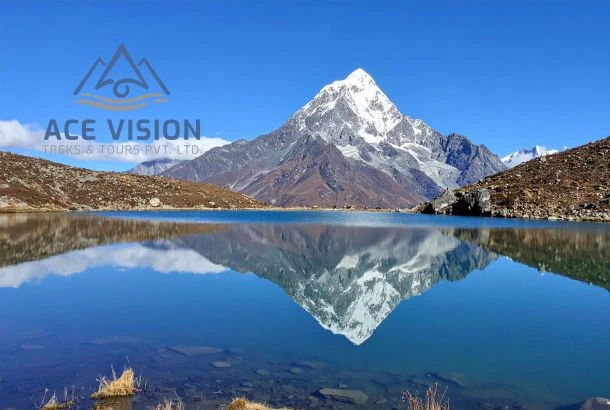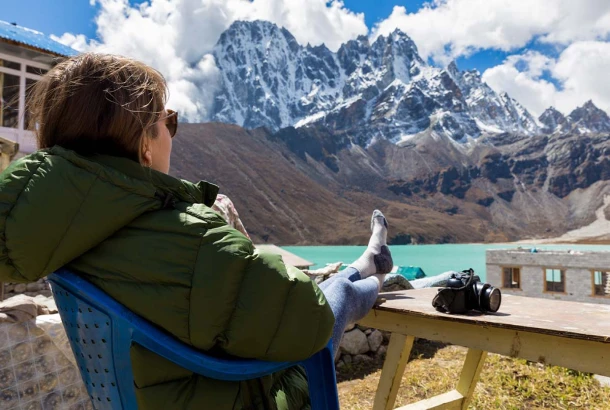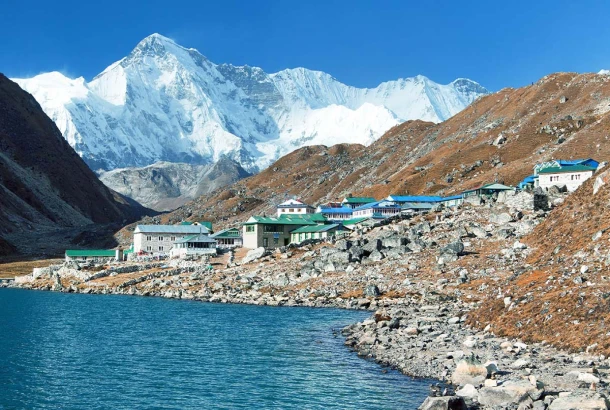Dashain festival
Dashain is the celebration of the victory of good over bad. In a society where women are already placed on a high pedestal and worshipped as a blessing to any household, Dashain celebrates the nine forms of Durga- the mother of the universe. Also known as Kali, Adi-Shakti, and Parvati, Durga is the symbol of nature, a divine being that gave birth to all the gods that Hindus worship.
Families from all over gather to visit each other, to enjoy the festival of Dashain. Elders put tika on the foreheads of young ones and bless them with a long and happy life. Guests are welcomed in the house with a feast and each day is a different kind of celebration. Traditional bamboo swings are stood up in every locality and children wait in queue to enjoy the swings and experience the feeling of flying in the sky. Kites can be seen flying in the sky, a symbol of freedom while still being tied to the earth.
Celebration of Dashain
Ghatasthapana
Ghatasthapana, the first day of Dashain commences with the ritual of planting the seeds of barley, wheat, or maize, on a banana leaf filled with mud. After 10 days, the sprouts of these seeds are used as Jamara on the day of Vijaya Dashami. A copper pot is covered in cow dung and one by one wheat is put all over it to symbolize a good harvest. Especially in hilly regions where agriculture is still the main occupation, the seed is a wish for nature to help them with the year's harvest.
Phoolpati
It is the fifth and one of the most important days of Dashain. On this day, nine types of flowers along with their leaves are offered to the sprouts as a sign of respect. It is also believed that the nine flowers welcome the respective goddesses associated with them. Traditionally, this ritual is started after the army personnel fire auspicious air shots at Tudhikhel.
Mahaastami
Mahaastami is the day of sacrifice and is an essential part of Dashain celebrations. People sacrifice animals, especially goats, ducks, and buffaloes, as a tribute to Kali, a fierce form of Nawadurga. The destroyer of evil forces, Kali is known as the divine protector. Hundreds of goats, bulls, and buffaloes are sacrificed in households and temples of Kali and this ritual lasts from dusk till dawn. While these sacrifices are offerings to the goddess Kali, they are consumed for the remaining days of Dashain celebrations.
Mahanawami
Mahanawami is the final day before the Vijaya Dashami. This day starts with worshipping the machines and equipment that you use in your daily life. In remote areas, where agriculture is still in its prime, people worship their traditional plow machine (known as Halo). In cities, people also worship their vehicles and pray for the safety of the vehicles and themselves. The streets in the cities will be sparsely populated as the offices are closed on public holidays and people stay at home with their families.
Vijaya Dashami
Vijaya Dashami is celebrated as the win of Ram- the symbol of truth over Rawan- the symbol of the devil. The word Vijaya means victory and Dashami means the tenth day of Dashain. Elders put tika (red color mixed with rice grains and yogurt) on the foreheads of younger ones and give them a blessing for long life and prosperity. Jamara (barley sprout) is put in the heads or ears and money is also given to the younger as a form of blessing.
As a form of respect, the younger touch the legs of their elders with their foreheads. This is the last day of the celebration of Nawadurga, where meat, fruits, and other homemade products are first offered to her statue and later consumed by the people as her blessing.
Tihar/ Deepavali Festival
Tihar known as deepavali festival of lights and color, Tihar is also a special moment of celebration. You will rarely come across such cultures where crows, dogs, and cows are also worshipped. People decorate their houses with flickering lights, candles, and small mud bowls. The cities are lit up with colorful lights whereas villages are decorated with vibrant flowers and plants. With crackling giggles of children and elders alike, Tihar is a sight to see.
Tihar is also the festival that showcases the bond between brothers and sisters. Likewise, the festival also commends the efforts of domestic animals like dogs, cows, and oxen. All in all, the ancient Hindu myths along with the glorious celebrations bring out the best of the festival.
Celebration of Tihar
Kag Tihar
Have you heard of any culture that worships a raven? Well, you are in for a surprise! The first day of Tihar is marked by worshipping crows (Kag in Nepali). In Hindu culture, crows are taken as the ride of Shani, the god of bad luck and retribution. People worship a crow to symbolize Shani and to ward off bad luck and obstacles. Crow is also worshipped as a symbol of all birds.
Laxmi Puja/ Kukur Tihar
The second day is celebrated by worshipping dogs, be it your own or any other stray dog in the locality. They are worshipped by putting a red tika on their forehead, a garland of flowers on their neck, and also serving them food.
In the evening, people paint a path from their front door to their place of worship, where they put a photo or statue of Goddess Laxmi. Goddess Laxmi is the Goddess of riches. The path is decorated with candles and flowers to welcome her into the house. In the night is the celebration of Deusi. Children and people in their twenties roam from house to house singing and dancing, asking for the offering of Sel, roti, grains, fruits, and money. The houses are lit up until late at night and people enjoy the show from their rooftops.
Gai/Goru Puja
The national animal of Nepal- the cow is worshipped with a red tika on their forehead, a garland of flowers on their neck, and several offerings of fodder. For an agrarian community like Nepal, cows and oxen can be regarded as the most important animals, which is why this day is celebrated to worship and thank them for their efforts. The people of the Newar community celebrate this day a bit differently. Mha-puja is celebrated by the Newar community where people worship themselves with flowers to reiterate the belief that your body is your most important possession.
In the night is the celebration of Bhailo. Girls roam from one house to another asking for offerings and also singing and dancing in their traditional dresses. They ask for an offering of fruits and money singing that they have been sent by King Bali as a symbol of merriment in the festival of lights.
Bhaitika
This is a celebratory day for brothers and sisters. On this day, people decorate the forehead of their siblings with seven colors which denote a rainbow. A garland of Makhamali (Gomphrena globosa) is put on the neck of the siblings wishing for a long life. The special flower is known for resembling longevity.
Before the start of the ceremony, a hard walnut is broken on the door for good luck. Sisters revolve around their brothers while making a circle with oil and water. There is a saying that even Yamaraj (the god of death) can’t take you away from this circle. The brothers and sisters then take turns putting tika on each other and exchanging food. Brothers offer their sisters money offerings and gifts and both parties exchange packets of fruits, nuts, dry fruits, and spices.
The gates of Ranipokhari are open on this occasion, for those who don’t have brothers and sisters of their own. Strangers come together in the venue and put tika as brothers and sisters, celebrating Bhaitika among themselves and sharing the joy.
Conclusion
Two of the most celebrated festivals in the Hindu community, Dashain and Tihar are the perfect depiction of the rich culture and traditional following in Nepal. Celebrating all elements of nature, the festivals of Dashain and Tihar are welcomed with warm smiles, crackling laughter, and happy hearts in Nepal. Visit Nepal this year to celebrate these auspicious occasions and leave with a memory that will remain in your hearts and minds forever. Nepalies great Dasai and Tihar festivals, we celebrated much more. We listed festivals of Nepal that Nepali people celebrate.





